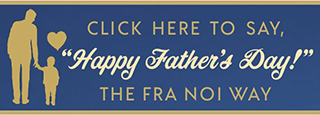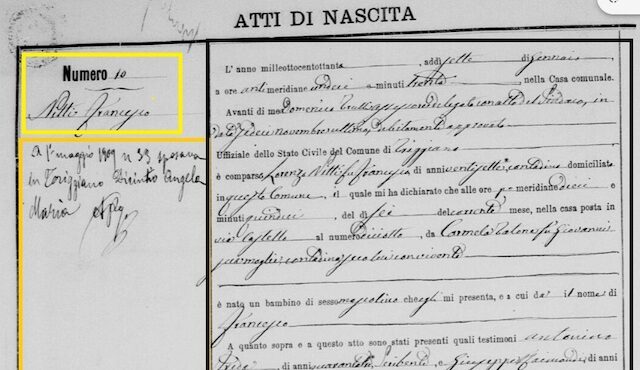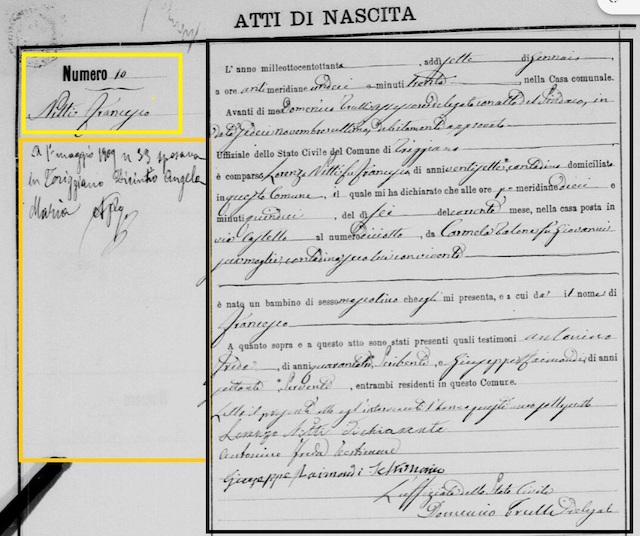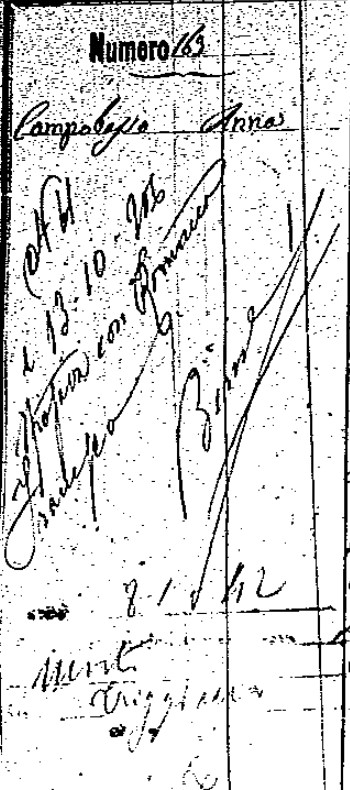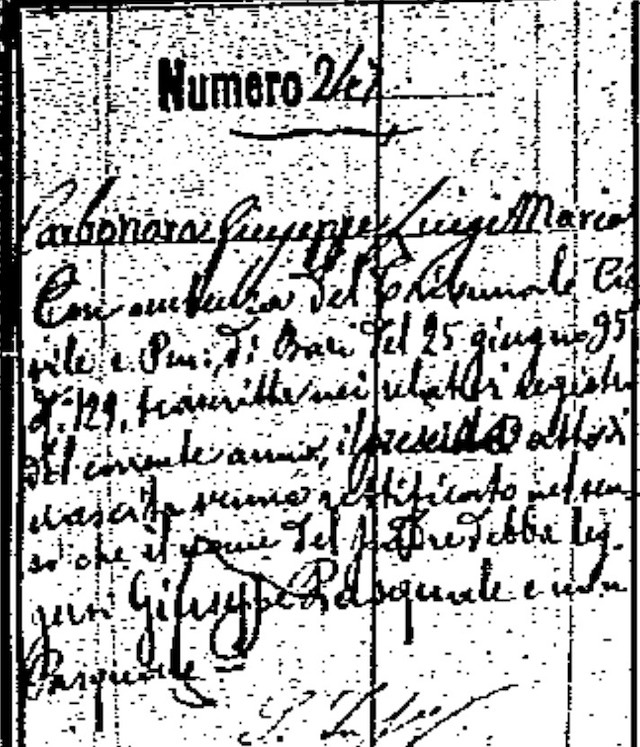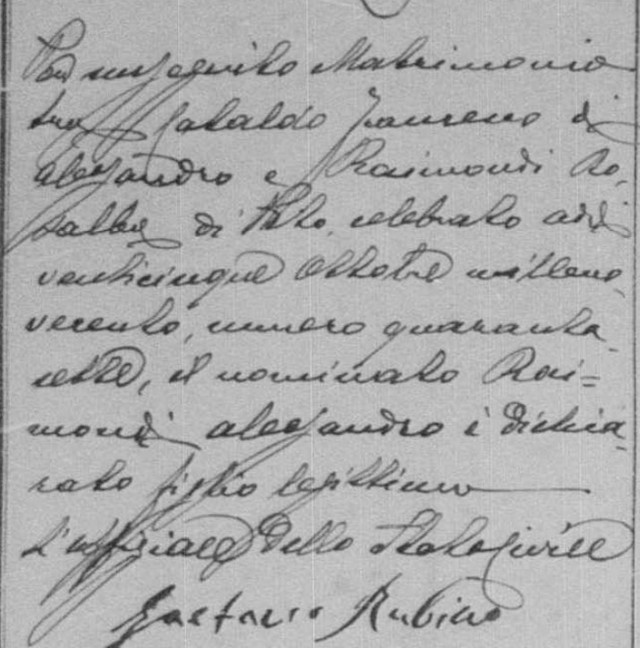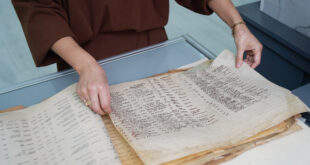Over the years, I have taught a lot of people how to read Italian birth records. However, having plowed through a lot of birth records recently, I need to promote the use of the “annotation” that may appear on the birth record. A lot of information can appear in an annotation that might not be available on a regular record. It might refer to an event that took place in a town that has no records available to us, or a year that is too recent for FamilySearch to release to us.
So what is an annotation? Usually in a birth record from 1866-1929, the record has the name and record number on the side of the page, and the details in the middle.
In the above sample birth record, you can see the yellow box contains the person’s record number and name. The black box contains the standard details of the record, and the orange area contains a blank space used for annotations.
So what can you find in an annotation that may not be in the record? There are three major types of information that may be shown here, although not every record has an annotation.
1.The annotation may list the death of this person. Sometimes they write in a death date by itself with no other information. “Morte 13-07-1880” This would mean they died in this same town. You can go looking for that death record to get it sourced, which saves a lot of time just searching aimlessly. Another kind of death would be one that happened decades later, frequently in another town. It depends on how your town clerk spent his time. Some might have recorded a lot of deaths as annotations in the birth records, and many did not.
 I have found a number of deaths for people in my tree that occurred long after the death record years that are available to me. I will say that I have never found a death annotation for anyone who died in America, so please don’t get your hopes up.
I have found a number of deaths for people in my tree that occurred long after the death record years that are available to me. I will say that I have never found a death annotation for anyone who died in America, so please don’t get your hopes up.
2.The annotation could mention one or more marriages of this person. This is especially helpful when they married in another town, but is also helpful if you have not found the marriage yet in this town. Here are examples of people who married once, twice and even three times!
Here is an example of an annotation for both a marriage and a death on the same birth record.
3.The annotation may show a correction of a piece of data in the record, such as the mother’s name. The example below merely mentions that the father’s first name is Giuseppe Pasquale and not Pasquale.
Sometimes the annotation correction will be for a baby who was born to a single parent, but soon after the birth, both parents married each other and have now legitimized the infant. They might have even changed the baby’s surname to match the father’s.
There is another type of annotation that appears next to the first name on the birth record. You can find three types of information here.
1.Next to the given name(s) there might be a mention that this baby is part of a multiple birth, such as twin or even triplet. This is a handy reminder that when you are looking for all children of a particular couple, and one of those children is mentioned as a twin, you should immediately find the other twin in the next or previous record.\
“…who is twins with another, which concerns the following act”
“…who is twins with another, which concerns the previous act”
2.Next to the given name, there might be a mention that this baby was born “senza vita”, without life. This is a stillbirth. A very important point is that if a baby is stillborn, they will not record a separate death record in the town’s deaths. So when you cannot find the death for a particular child in the family, and there is another child born later with the same name, you ought to check the birth of the “first” child with that name to see if it’s “senza vita”.
It happens, far too frequently, that a twin is also stillborn, so both pieces of information are squeezed in with the name.
3.If the baby was born without known parents, a so-called “wheel” baby, otherwise known as a “foundling”, the surname might be next to the first name.
And if there is ONLY the first name on this line, then they are not a twin and they were alive at the moment of birth.
I don’t want to imply that these are the only pieces of information that can be found in the annotation area of the record. Your town may have done things differently. All I want to do is remind you to check the scribble under the name and see what else you find!
 Fra Noi Embrace Your Inner Italian
Fra Noi Embrace Your Inner Italian
